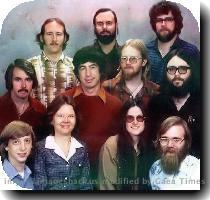Video game designers contemplate controller’s future as new technology nears
By Derrik J. Lang, APFriday, February 19, 2010
Game designers contemplate controller’s future
LOS ANGELES — Will this year mark the death of the joystick?
With major video game publishers adopting camera and motion controller technologies, the end of the traditional controller — you know, that thing with all those buttons, sticks and pads — could be imminent. Microsoft and Sony will introduce dueling systems for the Xbox 360 and PlayStation 3 later this year that could rival Nintendo’s popular Wii.
“I think it’s going to be awhile, if ever, that we get away from a solid control pad, especially with our game,” said Robert Bowling, creative strategist at “Modern Warfare” franchise developer Infinity Ward. “In a first-person shooter, you have to have that accuracy, so I don’t think we will ever move away from having that stick control and using a control pad.”
The next input evolution, the one that Sony Corp. and Microsoft Corp. unveiled at last year’s Electronic Entertainment Expo, involves cameras connected to consoles. Sony’s unnamed system employs detectable wandlike devices, while Microsoft’s Project Natal relies on camera-gesture recognition, which can enable gamers to exert their actual fists in a fighting game, for example.
Meanwhile, Nintendo has teased the Wii Vitality Sensor, a peripheral device also expected out this year that attaches to players’ fingertips and can measure their body signals. Much like the Microsoft and Sony camera systems, developers believe such technology can provide more specialized experiences, like a zombie game that unleashes more undead if a gamer seems bored.
“It’s this whole sensory thing that we’ve never had — a window to the player’s sort of mental state — or with the Wii, the biometrics that we can tune and tweak to customize an experience that way,” said Morgan Gray, senior producer at “Resident Evil” developer Capcom. “That is exciting because now it’s a two-way dialogue between the player and the game.”
Yet most developers and publishers agree that such innovation won’t mark the demise of the traditional controller. Despite revolutionizing the marketplace with the Wiimote, the motion-sensitive Wii doodad that can also be turned on its side and used as a traditional controller, Nintendo of America President Reggie Fils-Aime said buttons will continue to be mashed.
“Consumers want variety, and they want a range of experiences,” said Fils-Aime.
That’s been most apparent since the dawn of the Harmonix rhythm music franchise “Guitar Hero,” as controllers have taken the form of gizmos such as guitars, drums, scales, game-show buzzers and turntables. But not every mutated controller has been a hit. Gamers didn’t get on board with the critically derided skateboard-shaped controller for Activision’s “Tony Hawk: Ride.”
“It’s hard because I’m superopen for new technology and being creative in the gameplay,” said Shaun White, the Olympic gold medal snowboarder with his own Ubisoft gaming franchise. “I’m a big fan of letting it come out, and then seeing what we can do with it later. I think that sometimes if you go too far, it’s too advanced. It hasn’t been totally dialed in.”
Many questions remain about the gaming evolutions expected from the big three industry leaders later this year. How exactly will games and other programs use the technology? What will it cost? How well will it work? However, the question of whether these inventive new control schemes will mark the extinction of the traditional controller is decidedly negative.
AP Entertainment Writer Ryan Pearson in Los Angeles and Technology Writer Barbara Ortutay in New York contributed to this report.
Tags: California, Consumer Electronics, Entertainment And Media Technology, Game Consoles, Games, Geography, Los Angeles, North America, Recreation And Leisure, Shaun white, United States

